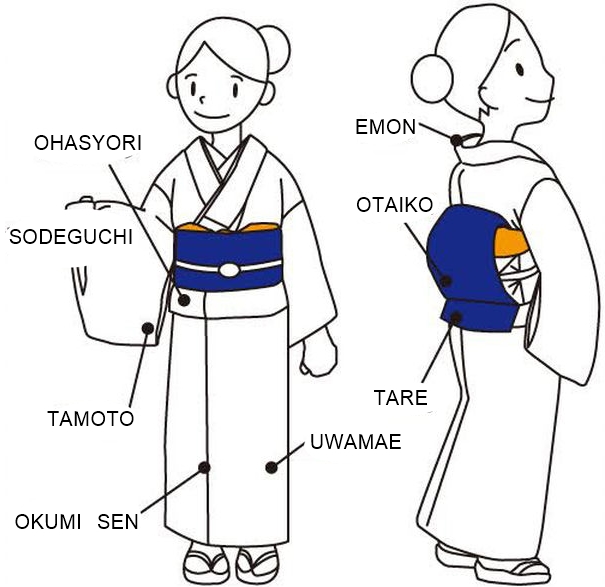京都着物レンタル夢館
For people from overseas, the words and terms for Kimono (着物) must be difficult and complicated to understand. For example, we have terms such as Miyatsuguchi (身八つ口, side openings of Kimono), Hakkake (inside layer of the Kimono’s skirt part), and Okumi-sen (衽線, a seam on the right side), all difficult even for Japanese.
However, you don’t have to be discouraged unless you want to become a Kimono tailor or a dresser. You will be fine if you memorize the two words I describe here: 1) Ohasyori (おはしょり), and 2) Tare of Otaiko (お太鼓の垂れ).
Ohasyori s the horizontal tuck of Kimono around the waist which is seen just under the Obi (帯) belt.
In old times, noble women wore Kimono with a long train. Later when the long trained Kimono became popular among the general public, people made a tuck by folding the excess portion of the train around their waists so as to make the outfit comfortable and less restrictive to move around. This is the origin of the Ohasyari.
Tare is the end part of an Obi belt that hangs down under the Otaiko knot in the back. At YUMEYAKATA, staff members will tell you, “Please do not forget to straighten your Ohasyori and Tare after using the bathroom. They are often flipped up.”
For the ribbon style knot, there’s no Tare, however, it’s better to check your ribbon when you get off of a bus or a train. Your ribbon can be squashed or flattened by the seats. If it’s flat, please rearrange the Obi again by lifting the bow to keep your Kimono looking beautiful.




